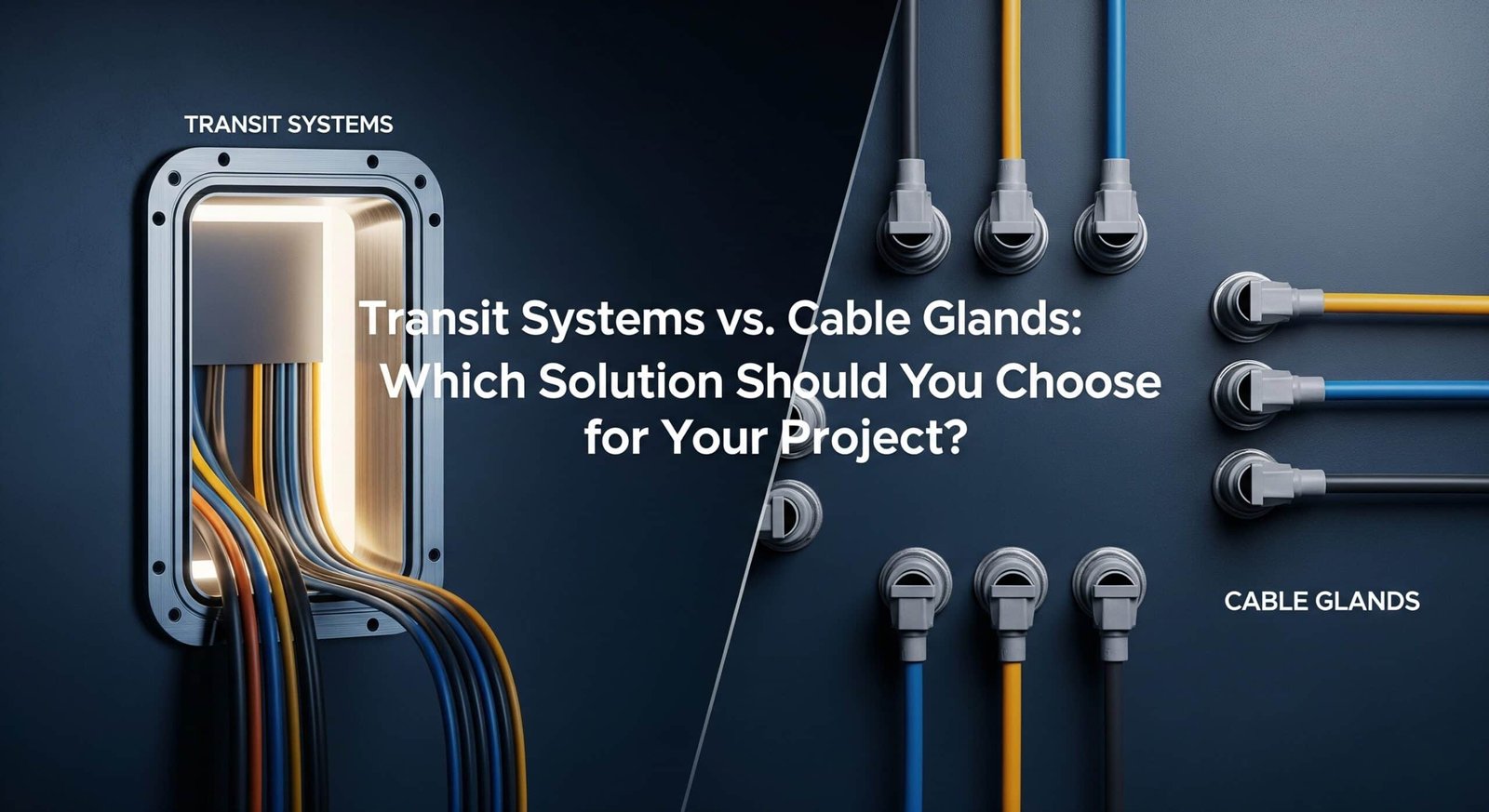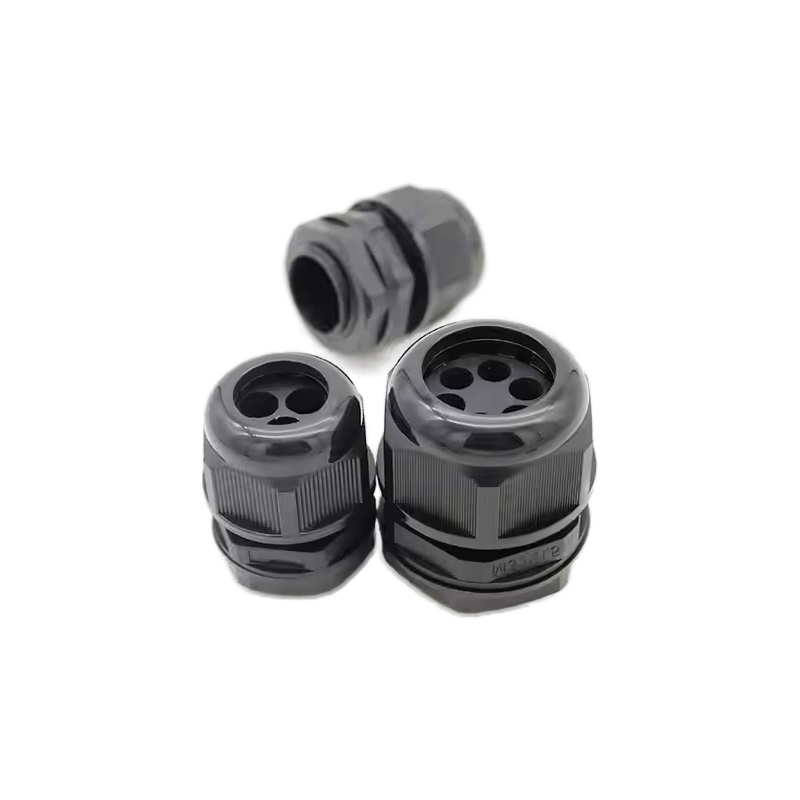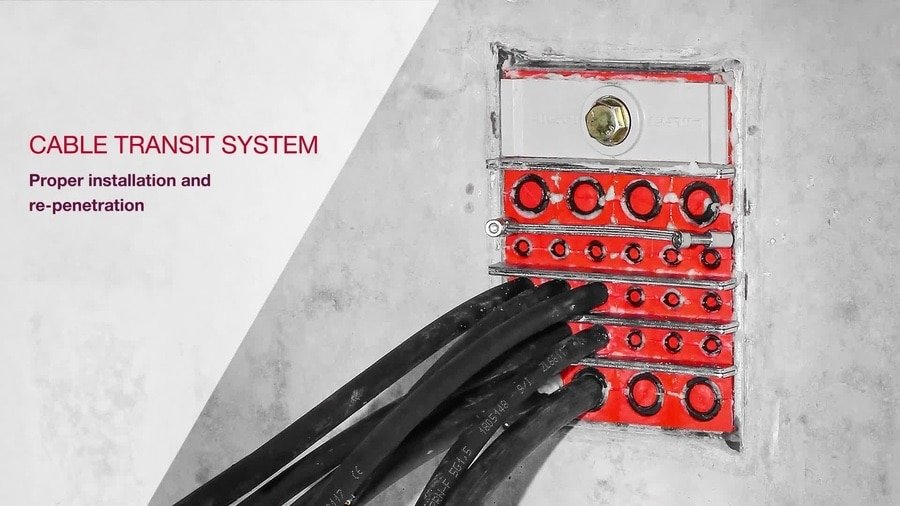
Engineers waste thousands of dollars and countless hours choosing the wrong cable entry solution, leading to installation delays, maintenance nightmares, and costly retrofits when projects require modifications. The confusion between transit systems and traditional cable glands creates specification errors that compromise both functionality and budget efficiency in critical infrastructure projects.
Transit systems provide modular, high-density cable management for applications requiring frequent changes or multiple cable types, while cable glands offer individual sealing solutions for permanent installations with specific environmental protection requirements. Understanding application requirements, installation constraints, and long-term maintenance needs determines which solution delivers optimal performance and cost-effectiveness.
Having worked with facility managers, electrical contractors, and system integrators across Europe, North America, and the Middle East—from data centers to petrochemical plants—I’ve seen how proper solution selection can dramatically impact project success and operational efficiency. Let me share the essential knowledge every engineer needs to make informed decisions between these two critical cable management approaches.
Table of Contents
- What Are Transit Systems and How Do They Differ from Cable Glands?
- When Should You Choose Transit Systems Over Cable Glands?
- What Are the Key Performance Differences Between Both Solutions?
- How Do Installation and Maintenance Requirements Compare?
- Which Solution Offers Better Long-Term Value for Different Applications?
- FAQs About Transit Systems vs Cable Glands
What Are Transit Systems and How Do They Differ from Cable Glands?
Transit systems are modular cable entry solutions that accommodate multiple cables through a single penetration using removable sealing modules, while cable glands provide individual threaded entries with integrated sealing for single cables or cable bundles.
Understanding these fundamental differences is crucial because each solution addresses distinct engineering challenges and offers unique advantages depending on application requirements.
Transit System Architecture
Modular Design: Transit systems consist of a frame or housing that accepts multiple sealing modules, each designed for specific cable types and sizes. This modular approach allows mixed cable installations through a single wall penetration.
Sealing Technology: Advanced elastomer sealing modules provide environmental protection while allowing easy cable insertion and removal without tools. The sealing effectiveness is maintained through compression and material selection rather than threaded connections.
Frame Integration: Transit frames integrate into walls, panels, or enclosures using flanged connections, welding, or mechanical fastening systems that provide structural integrity and environmental sealing at the penetration level.
Scalability Features: Systems can be expanded or reconfigured by adding, removing, or changing sealing modules without affecting other cables or compromising the overall installation integrity.
I remember working with Jennifer, a data center manager at a major financial services company in London. Her facility required frequent cable additions and changes to support evolving IT infrastructure. Initially, she was using individual cable glands, which required panel modifications and service interruptions for each change. After implementing our modular transit system, her team could make cable changes in minutes without affecting other services or compromising environmental protection. The solution reduced her maintenance costs by 60% while improving operational flexibility. 😊
Cable Gland Characteristics
Individual Sealing: Each cable gland provides dedicated environmental protection for a single cable or cable bundle, with sealing performance dependent on proper installation and cable preparation.
Threaded Connection: Standard threaded interfaces (metric, NPT1, PG) provide mechanical attachment to equipment housings while creating the primary environmental seal through gaskets or thread sealants.
Material Variety: Available in multiple materials including nylon, brass, stainless steel, and specialized alloys to match specific environmental and performance requirements.
Integrated Features: Many cable glands include built-in strain relief2, electromagnetic shielding, explosion-proof ratings, and other specialized features within a single component.
Key Architectural Differences
| Feature | Transit Systems | Cable Glands |
|---|---|---|
| Cable Capacity | Multiple cables per penetration | Single cable per gland |
| Installation Flexibility | Modular, tool-free changes | Individual threading required |
| Panel Requirements | Single large penetration | Multiple threaded holes |
| Sealing Method | Compression-based modules | Threaded with gaskets |
| Expansion Capability | Easy module addition | Requires new panel holes |
| Material Options | Frame + module combinations | Integrated material selection |
Environmental Integration: Transit systems excel in applications requiring clean, organized cable management with minimal panel penetrations, while cable glands provide distributed sealing solutions that can be optimized for specific local conditions.
Certification Approaches: Transit systems typically require system-level certifications covering the complete assembly, while cable glands can be individually certified and combined to meet overall installation requirements.
When Should You Choose Transit Systems Over Cable Glands?
Choose transit systems for applications requiring high cable density, frequent modifications, mixed cable types, or clean architectural appearance, while cable glands are optimal for permanent installations with specific environmental requirements or distributed cable entries.
Application analysis considering current needs, future expansion plans, and maintenance requirements determines which solution provides the best long-term value.
High-Density Applications
Data Centers: Server rooms and network facilities require numerous cables of different types (power, data, fiber) with frequent additions and changes. Transit systems provide organized, scalable solutions that maintain airflow management and fire protection.
Control Panels: Industrial control systems often need mixed signal, power, and communication cables entering through limited panel space. Transit systems maximize cable density while maintaining electromagnetic compatibility and environmental protection.
Telecommunications: Central offices and equipment rooms require high cable counts with varying sizes and types. Transit systems provide the flexibility needed for network evolution and technology upgrades.
Building Management: Smart building systems integrate multiple cable types for HVAC, security, lighting, and communication systems through common penetrations where transit systems excel.
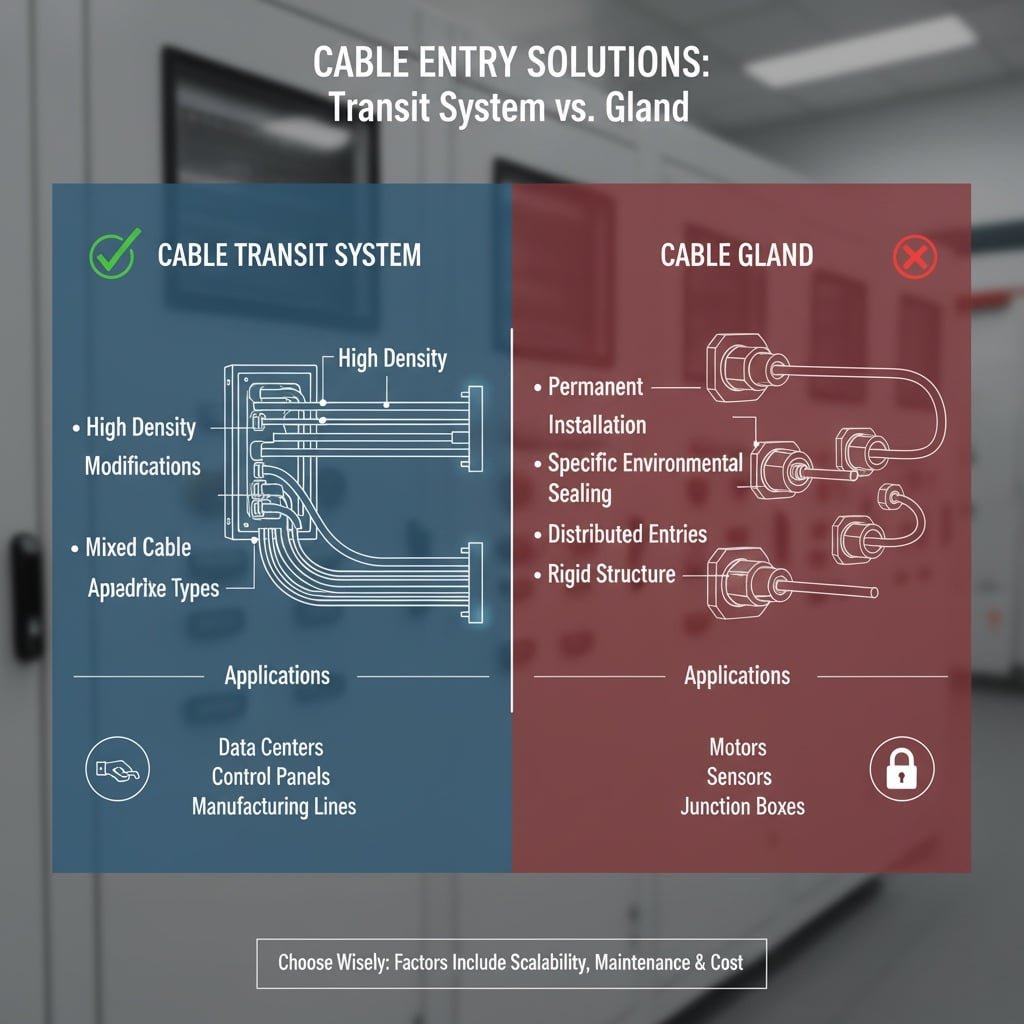
Modification-Intensive Environments
Research Facilities: Laboratories and research installations require frequent equipment changes and cable modifications that benefit from tool-free transit system flexibility.
Manufacturing Lines: Production equipment undergoes regular reconfiguration and upgrades that require cable changes without production interruption, making transit systems ideal.
Temporary Installations: Construction sites, events, and temporary facilities need cable solutions that can be easily reconfigured and relocated as requirements change.
Pilot Projects: Development and testing environments require maximum flexibility for cable routing changes during system optimization phases.
Architectural Considerations
Clean Appearance: Transit systems provide organized, professional appearance with minimal visible hardware compared to multiple individual cable glands.
Space Optimization: Single large penetrations require less panel space than multiple threaded holes, allowing more efficient use of equipment housing real estate.
Fire Protection: Transit systems can provide superior fire stopping3 performance through continuous sealing barriers compared to multiple individual penetration points.
Maintenance Access: Centralized cable entry points simplify inspection, testing, and maintenance procedures compared to distributed cable gland installations.
Marcus, who manages electrical installations for a major automotive manufacturer in Detroit, learned the value of transit systems during a plant expansion project. His initial design used individual cable glands for each production line connection, requiring over 200 panel penetrations. Engineering review revealed that transit systems could reduce penetrations by 75% while providing better cable organization and easier future modifications. The change saved $50,000 in installation costs and significantly improved the facility’s ability to adapt to production changes.
What Are the Key Performance Differences Between Both Solutions?
Transit systems excel in flexibility, cable density, and modification ease while cable glands provide superior individual cable protection, specialized environmental ratings, and distributed installation options with specific performance characteristics.
Understanding performance differences helps engineers match solution capabilities to application requirements and avoid over-engineering or under-protection scenarios.
Environmental Protection Comparison
Sealing Performance: Cable glands can achieve higher IP ratings (up to IP68) for individual cable entries, while transit systems typically provide IP65-IP67 protection across the entire cable group through frame-level sealing.
Chemical Resistance: Individual cable glands can be selected with materials optimized for specific chemical exposures, while transit systems use standardized materials that must be compatible with all anticipated chemicals.
Temperature Performance: Cable glands offer material choices optimized for extreme temperatures, while transit systems must balance material properties across all sealing modules within the system.
Pressure Ratings: Individual cable glands can handle higher pressure differentials and provide better performance in pressurized or vacuum applications compared to transit system frame sealing.
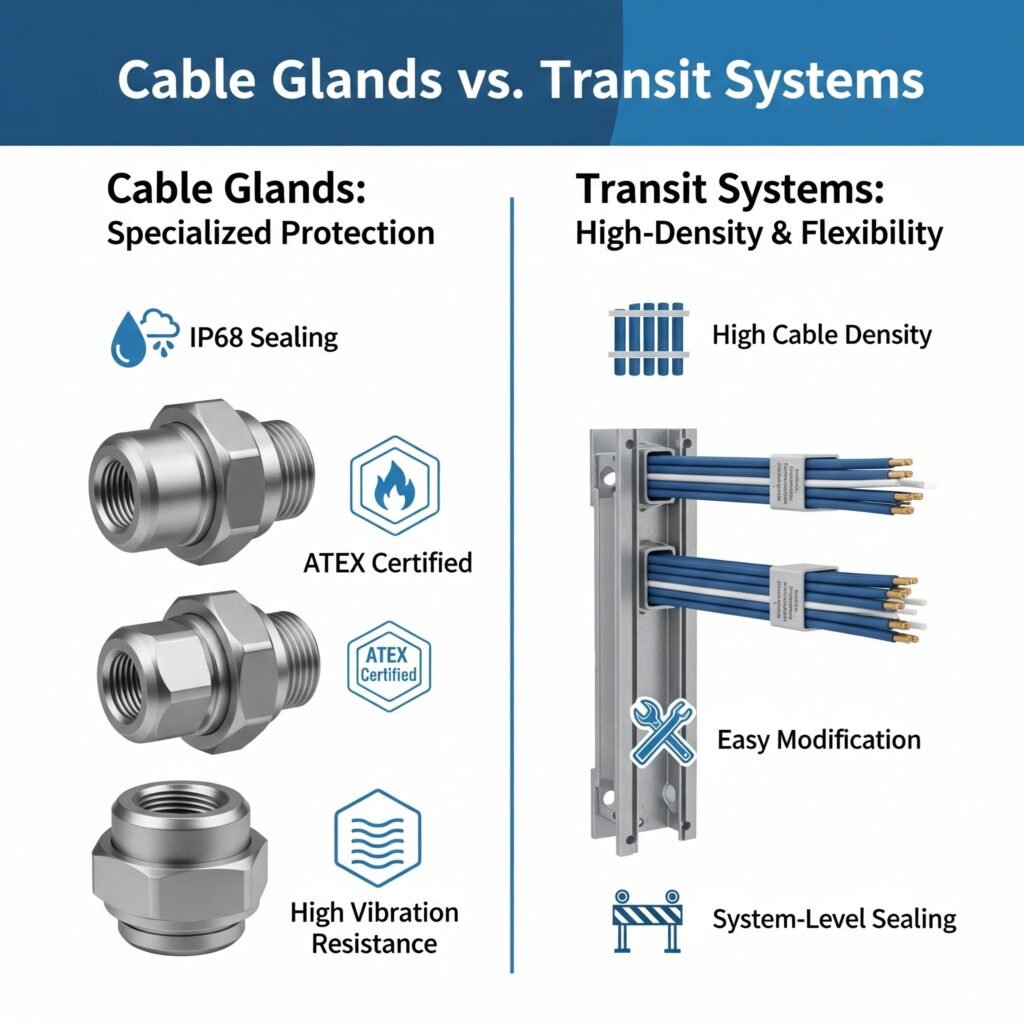
Electrical Performance Characteristics
EMC Shielding: Specialized EMC cable glands provide superior electromagnetic shielding for individual cables, while transit systems offer system-level shielding that may not be optimized for specific cable types.
Grounding Continuity: Cable glands with integrated grounding features provide direct electrical continuity, while transit systems require separate grounding provisions for metallic cables and shields.
Explosion Protection: ATEX4 and hazardous area cable glands offer certified explosion protection for individual entries, while transit systems require specialized frames and modules for hazardous area applications.
Signal Integrity: High-frequency applications may benefit from individual cable gland optimization, while transit systems provide good general-purpose performance across mixed signal types.
Mechanical Performance
Strain Relief: Individual cable glands provide optimized strain relief for specific cable types and installations, while transit systems offer standardized strain relief that may not be optimal for all cable types.
Vibration Resistance: Threaded cable glands provide excellent vibration resistance through mechanical connections, while transit systems rely on frame mounting and module retention systems.
Cable Support: Cable glands provide individual cable support and stress distribution, while transit systems require additional cable management for proper support and organization.
Installation Integrity: Cable glands maintain individual sealing integrity even if adjacent installations fail, while transit systems may experience cascading effects if frame sealing is compromised.
Performance Optimization Strategies
| Application Type | Recommended Solution | Key Performance Factors |
|---|---|---|
| Hazardous Areas | Individual Cable Glands | Explosion protection, certification compliance |
| High EMI Environments | EMC Cable Glands | Individual shielding optimization |
| High Cable Density | Transit Systems | Space efficiency, modification flexibility |
| Mixed Cable Types | Transit Systems | Standardized sealing, organized routing |
| Extreme Environments | Specialized Cable Glands | Material optimization, individual protection |
| Frequent Changes | Transit Systems | Tool-free modifications, minimal downtime |
How Do Installation and Maintenance Requirements Compare?
Transit systems require more complex initial installation but offer simplified ongoing maintenance, while cable glands provide straightforward individual installation with distributed maintenance requirements throughout the system lifecycle.
Understanding installation and maintenance implications affects both initial project costs and long-term operational expenses.
Initial Installation Requirements
Panel Preparation: Transit systems require precise frame mounting with proper alignment and sealing, while cable glands need accurately positioned and threaded holes that match specific thread specifications.
Installation Sequence: Transit systems benefit from coordinated installation with frame mounting before cable pulling, while cable glands can be installed individually as cables are terminated.
Skill Requirements: Transit system installation requires understanding of frame sealing and module selection, while cable gland installation needs proper threading and torque application techniques.
Tool Requirements: Transit systems typically require standard mounting hardware and alignment tools, while cable glands need thread cutting tools, torque wrenches, and sealing compound application equipment.
Ongoing Maintenance Considerations
Inspection Procedures: Transit systems allow centralized inspection of sealing integrity and cable condition, while cable glands require individual inspection of each entry point throughout the installation.
Replacement Requirements: Transit system modules can be replaced without affecting other cables, while cable gland replacement may require cable disconnection and system downtime.
Preventive Maintenance: Transit systems benefit from periodic frame sealing inspection and module condition assessment, while cable glands require individual torque checking and seal replacement.
Documentation Needs: Transit systems require system-level documentation of module configurations, while cable gland installations need individual component tracking and maintenance records.
Modification and Expansion Procedures
Cable Addition: Transit systems allow new cables through spare modules or frame expansion, while cable glands require new panel penetrations and threading operations.
Cable Removal: Transit system modules can be plugged or replaced when cables are removed, while cable gland removal leaves open holes that must be sealed.
System Changes: Transit systems accommodate cable type changes through module replacement, while cable gland changes require complete removal and reinstallation.
Emergency Repairs: Transit systems allow quick module replacement for emergency repairs, while cable gland failures may require temporary sealing until proper replacement parts are available.
Cost Analysis Over Time
Initial Investment: Transit systems typically have higher upfront costs due to frame and module expenses, while cable glands have lower individual costs but may require more labor for multiple installations.
Maintenance Costs: Transit systems reduce ongoing maintenance costs through centralized access and simplified procedures, while cable glands distribute maintenance requirements but may have higher cumulative costs.
Modification Expenses: Transit systems minimize modification costs through tool-free changes, while cable gland modifications require additional labor and materials for panel work.
Lifecycle Value: Transit systems often provide better long-term value in dynamic environments, while cable glands may be more cost-effective for static installations with minimal changes.
Which Solution Offers Better Long-Term Value for Different Applications?
Transit systems provide superior long-term value for dynamic, high-density applications requiring frequent modifications, while cable glands offer better value for permanent installations with specific environmental protection requirements or distributed cable entry needs.
Value analysis must consider Total Cost of Ownership5 including installation, maintenance, modifications, and operational impact over the expected system lifetime.
Application-Specific Value Analysis
Data Centers and IT Infrastructure: Transit systems excel in server rooms and network facilities where cable changes are frequent and downtime is costly. The ability to make modifications without service interruption provides significant operational value beyond initial cost considerations.
Industrial Control Systems: Manufacturing and process control applications benefit from transit system flexibility during equipment upgrades and process modifications. The reduced downtime during changes often justifies higher initial investment.
Building Infrastructure: Commercial and institutional buildings with evolving technology needs gain long-term value from transit system adaptability, especially in areas requiring frequent cable additions for new services.
Permanent Installations: Utilities, infrastructure, and fixed industrial installations often achieve better value with cable glands optimized for specific environmental conditions and requiring minimal future modifications.
Total Cost of Ownership Factors
Installation Costs: Transit systems may have higher initial material costs but can reduce installation labor through simplified cable management and reduced panel work requirements.
Operational Impact: Transit systems minimize operational disruption during modifications, providing value through reduced downtime costs and improved system availability.
Maintenance Efficiency: Centralized cable management and simplified inspection procedures reduce ongoing maintenance costs and improve system reliability over time.
Future Expansion: Transit systems provide built-in expansion capability that eliminates costly retrofits and panel modifications when system requirements change.
Decision Matrix for Value Optimization
| Factor | Transit Systems Best | Cable Glands Best |
|---|---|---|
| Cable Change Frequency | >10 changes/year | <5 changes/year |
| Cable Density | >20 cables/m² | <10 cables/m² |
| Environmental Severity | Standard conditions | Extreme/specialized |
| Initial Budget | Higher acceptable | Cost-constrained |
| Downtime Sensitivity | Critical operations | Maintenance windows available |
| Certification Requirements | Standard ratings | Specialized (ATEX, marine) |
ROI Calculation: Transit systems typically achieve positive ROI within 2-3 years in high-change environments, while cable glands provide immediate cost advantages in stable installations.
Risk Mitigation: Transit systems reduce risks associated with cable modifications and system changes, while cable glands minimize risks in harsh environmental conditions through specialized protection.
Hassan, who owns a large petrochemical facility in Saudi Arabia, initially resisted transit systems due to higher upfront costs. However, analysis of his facility’s expansion history showed cable modifications every 18 months on average. After implementing transit systems in his new control building, modification costs dropped 70% and system availability improved significantly. The solution paid for itself within two years through reduced downtime and simplified maintenance procedures.
Conclusion
The choice between transit systems and cable glands depends on application requirements, modification frequency, environmental conditions, and long-term operational needs. Transit systems excel in dynamic, high-density environments requiring flexibility and easy modifications, while cable glands provide optimized individual protection for permanent installations with specific environmental challenges.
Success lies in matching solution capabilities to actual application requirements rather than defaulting to familiar approaches. At Bepto, we provide both comprehensive transit system solutions and specialized cable glands to meet diverse application needs. Our engineering team helps customers analyze their specific requirements to determine which approach delivers optimal performance and value for their unique situations.
FAQs About Transit Systems vs Cable Glands
Q: Can I mix transit systems and cable glands in the same installation?
A: Yes, many installations benefit from using both solutions where each excels. Use transit systems for high-density, frequently modified areas and cable glands for specialized environmental protection or distributed entries. Ensure compatible environmental ratings and proper system integration.
Q: Which solution is better for outdoor installations?
A: Cable glands typically perform better in harsh outdoor environments due to individual sealing optimization and specialized materials. Transit systems work well outdoors but may require more frequent maintenance and have limitations in extreme conditions like salt spray or chemical exposure.
Q: How do I calculate the break-even point between transit systems and cable glands?
A: Consider initial costs, installation labor, expected modification frequency, and downtime costs. Transit systems typically break even within 2-3 years if you expect more than 10 cable changes annually or if downtime costs exceed $1000 per incident.
Q: What are the main certification differences between these solutions?
A: Cable glands can achieve individual certifications for specific applications (ATEX, marine, EMC), while transit systems require system-level certifications. For hazardous areas or specialized environments, verify that transit system certifications cover your specific application requirements.
Q: Which solution requires less maintenance over time?
A: Transit systems generally require less maintenance due to centralized access and tool-free modifications. Cable glands need individual inspection and maintenance but may have longer service life in stable installations. Consider your facility’s maintenance capabilities and preferences when choosing.
-
Learn about the specifications and applications of the American National Standard Pipe Thread standard. ↩
-
Understand the importance of strain relief in preventing damage to cables and connections from tension and movement. ↩
-
Explore the methods and materials used to seal openings and joints to impede the spread of fire and smoke. ↩
-
See the official requirements of the European Union’s ATEX directives for equipment used in explosive atmospheres. ↩
-
Learn the key factors in calculating the full lifecycle cost of an asset beyond its initial purchase price. ↩

